In a time where speed, convenience, and efficiency are essential in cooking, the pressure cooker remains a staple in kitchens across the globe—especially in India. Whether you're preparing dals, curries, or steaming traditional delicacies, the pressure cooker is an unbeatable time-saver. But one common dilemma continues to confuse home cooks and first-time buyers alike: Should you choose an aluminum or a stainless steel pressure cooker?
Each material has its distinct advantages and trade-offs. While aluminum is known for its affordability and fast heating, stainless steel stands out for durability, safety, and long-term value. This guide explores both materials in detail, helping you make an informed choice based on your cooking habits, health priorities, and kitchen needs.
Table of Contents
Heat Conductivity
Aluminum Pressure Cookers
-
Advantages: Aluminum conducts heat quickly and evenly, making it ideal for fast, energy-efficient cooking.
-
Limitations: It loses heat quickly after the heat source is turned off, and may not be suitable for dishes requiring consistent simmering.
Stainless Steel Pressure Cookers
-
Advantages: Retains heat longer and distributes it more steadily. Particularly useful for slow-cooked recipes.
-
Limitations: On its own, stainless steel doesn’t conduct heat as efficiently as aluminum.
-
Solution: Many high-end pressure cookers now use tri-ply technology—with an aluminum core sandwiched between layers of stainless steel—to offer both efficiency and uniform heating.
Durability and Longevity
Aluminum
-
Pros: Lightweight and easy to handle.
-
Cons: A softer metal that dents easily and may warp over time with repeated high-heat exposure. Also reacts with acidic foods like tomatoes and tamarind, which can alter taste and appearance.
Stainless Steel
-
Pros: Highly durable, corrosion-resistant, and retains its shape and shine for years. It does not react with any food, making it safe for cooking all types of dishes.
-
Cons: Slightly heavier than aluminum, especially in multi-layered construction.
Health and Food Safety
Aluminum
-
Prolonged use, especially with acidic foods, may cause small amounts of aluminum to leach into food. Though many aluminum cookers now come with anodized or non-stick coatings, these can wear off over time and may not be ideal for long-term health.
Stainless Steel
-
Non-reactive and completely food-safe. High-grade stainless steel, especially those free from nickel or made from surgical-grade materials, ensures safe and hygienic cooking for daily use.
MEYER Presta 5.5L Tri-ply with Outer Lid Pressure Cooker
Weight and Usability
Aluminum
-
Lightweight and easy to handle, making it a popular choice for quick daily meals or for users who prefer lighter cookware.
Stainless Steel
-
Heavier due to its density and build quality. However, many stainless steel pressure cookers, such as the Meyer Presta, are ergonomically designed with stay-cool handles to make handling easier and more comfortable, even for larger sizes.
Maintenance and Cleaning
Aluminum
-
Tends to discolor over time and is not dishwasher-safe. Needs gentle cleaning and care to preserve its look and structure.
Stainless Steel
-
Easy to maintain, doesn’t stain easily, and is usually dishwasher-safe. Resistant to scratches and retains its appearance with minimal effort.
Cost and Value
Aluminum
-
More affordable, making it an attractive option for budget-conscious buyers or those purchasing a secondary cooker.
Stainless Steel
-
Typically more expensive, but the longevity, safety, and added features justify the higher upfront investment.
The Best of Both Worlds: Meyer Presta Tri-Ply Pressure Cooker
For those looking to combine the superior heat conduction of aluminum with the safety and durability of stainless steel, a tri-ply pressure cooker is the ultimate solution—and the Meyer Presta is a standout choice in this category.
Why Meyer Presta Excels
-
Tri-Ply Construction: An aluminum core enclosed between two layers of stainless steel ensures fast and even heating without hotspots.
-
Stainless Steel Build: Resists corrosion, offers food safety, and is incredibly durable.
-
Ergonomically Designed: Features stay-cool handles for easy and safe handling.
-
Step-Lid Safety Locking System: Ensures secure pressure sealing and foolproof cooking.
-
Available Sizes: Comes in 2L, 3L, and 5.5L options—ideal for single users, small families, or large gatherings.
Conclusion
If your primary concern is budget and speed, aluminum may suit your short-term needs.
But if you're looking for a safer, long-lasting, and more efficient pressure cooker, stainless steel—especially in tri-ply construction like Meyer Presta—is a far better investment for your health, kitchen, and cooking experience.


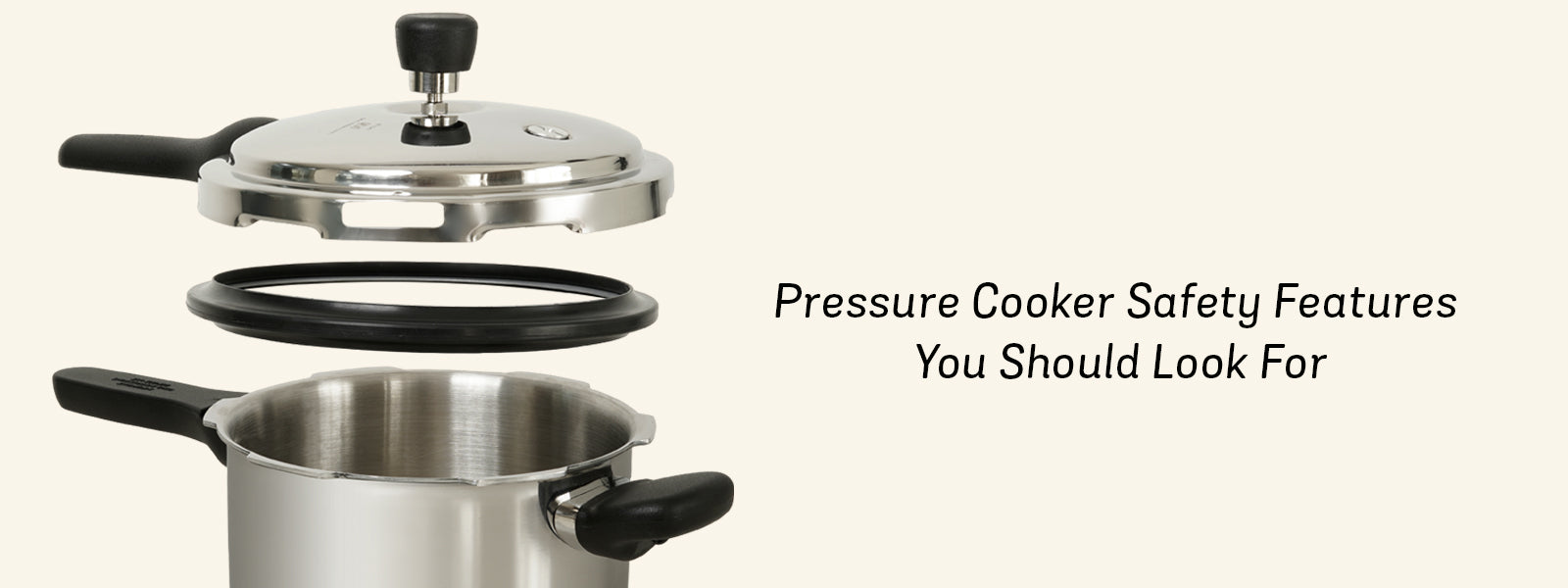
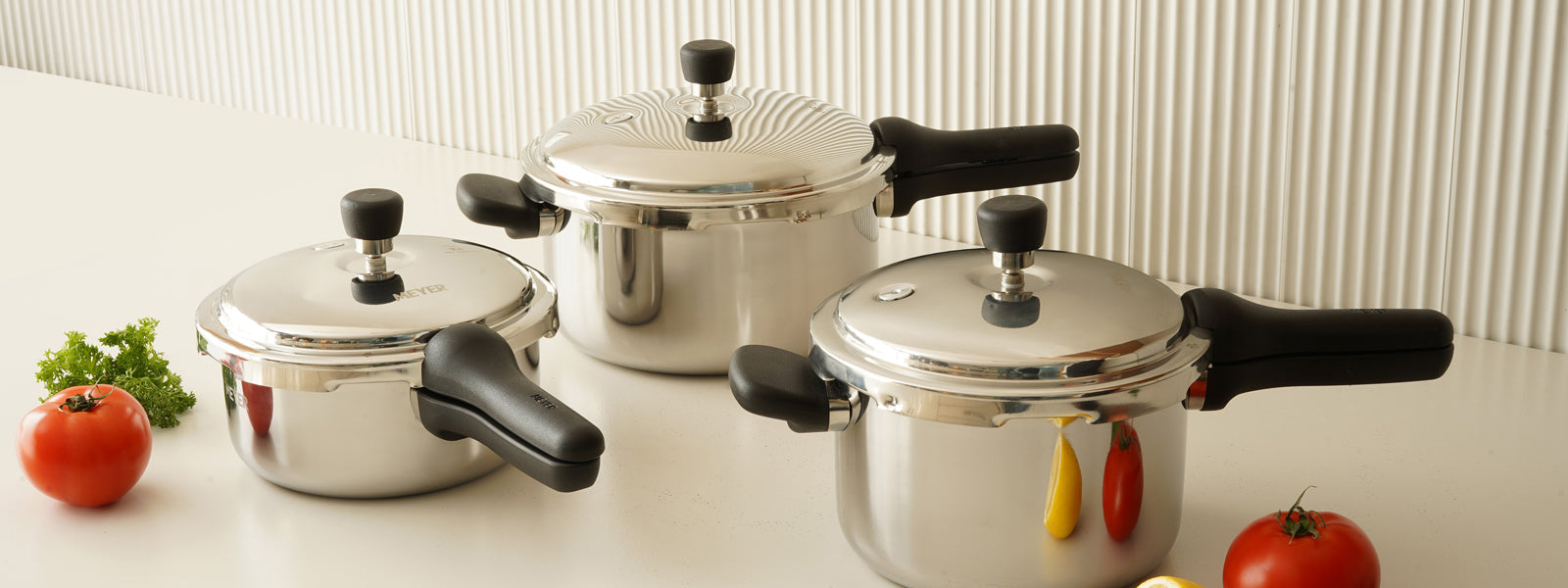
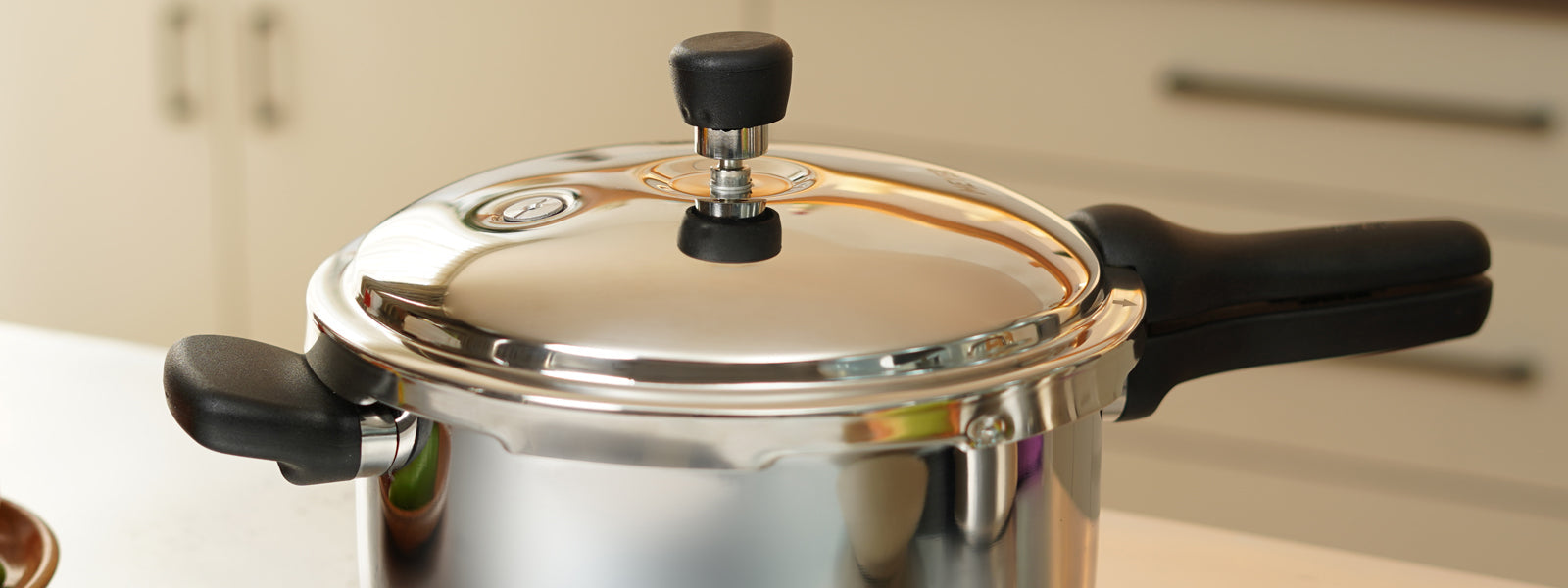
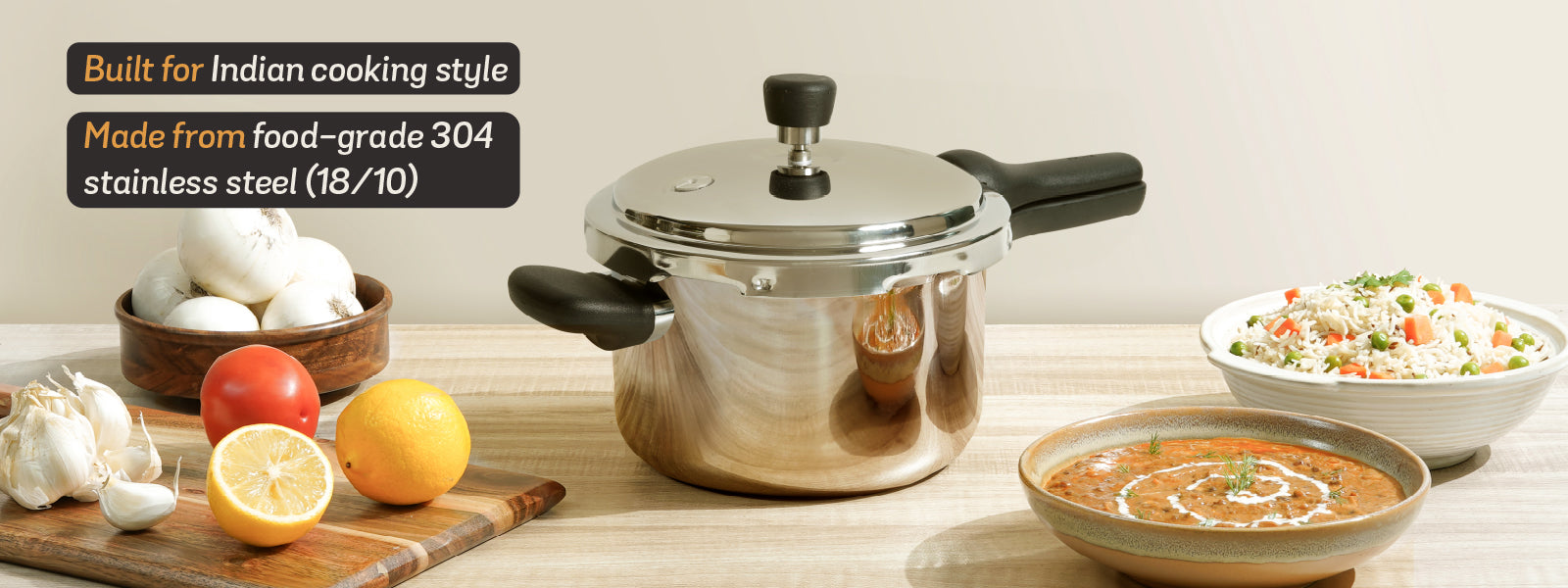
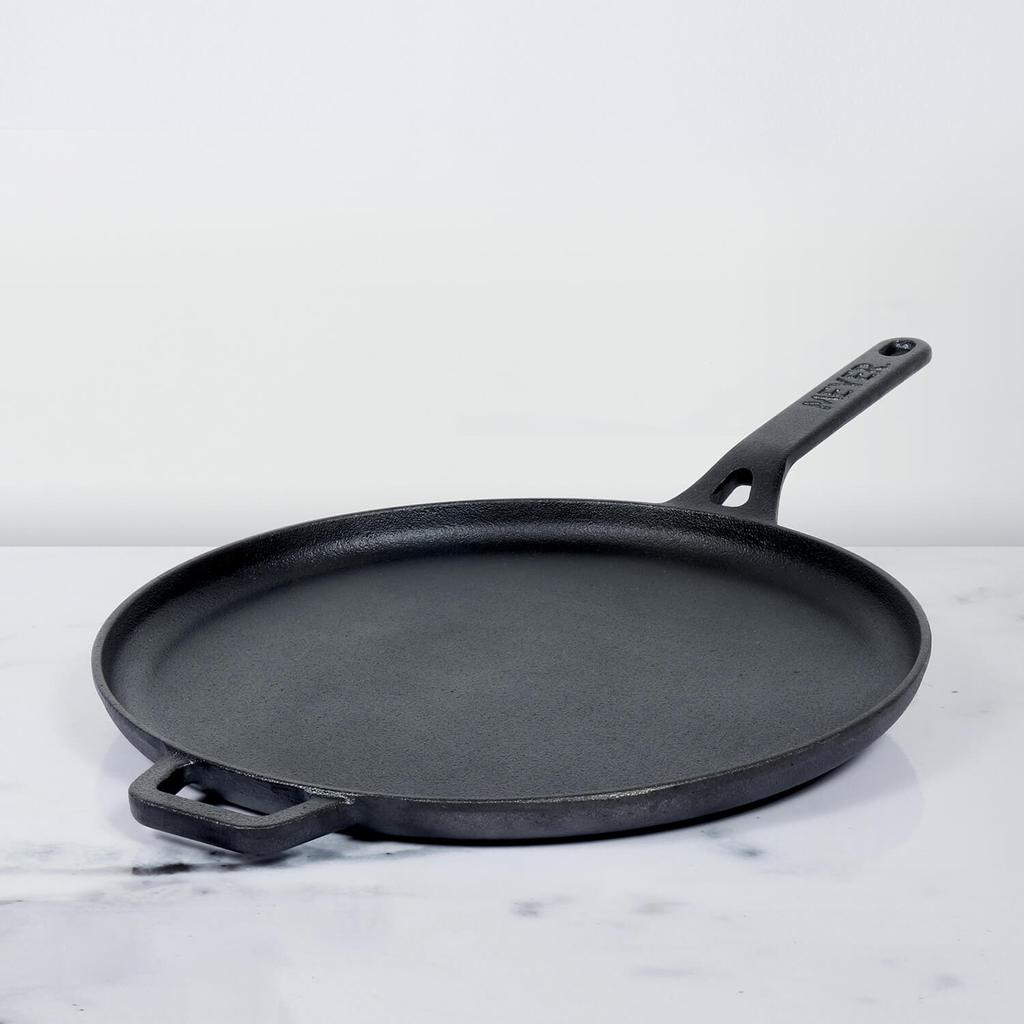
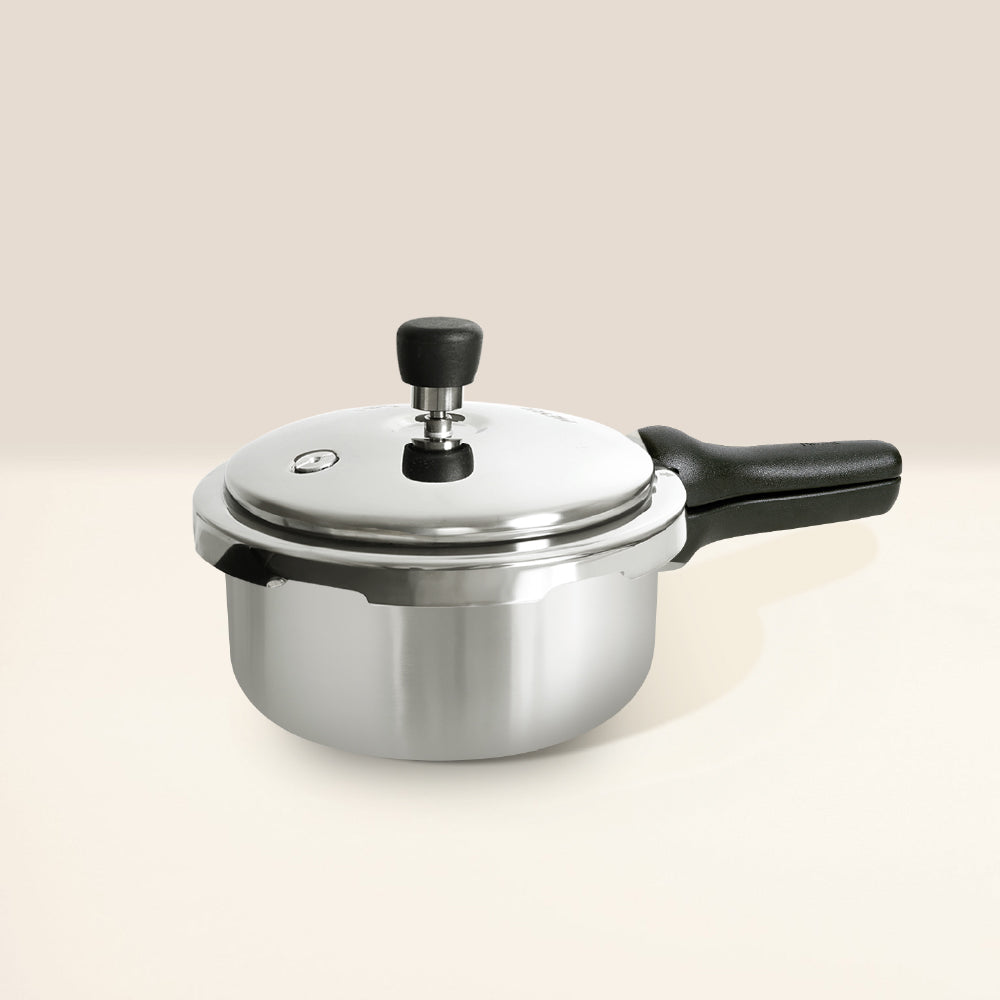




Leave a comment